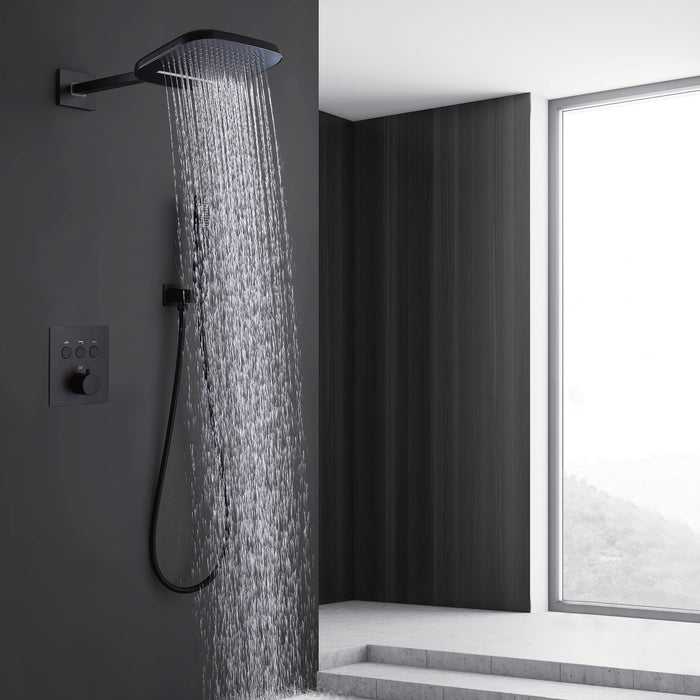Introduction
Shower systems play a crucial role in our daily lives, providing a refreshing and invigorating start to our mornings or a relaxing retreat after a long day. Among the various types of shower systems available, thermostatic and general shower systems stand out as popular choices. This article aims to provide a thorough examination of the pros and cons of these two types, helping consumers make informed decisions based on their preferences and needs.
Thermostatic Shower Systems
Definition and Explanation
Thermostatic shower systems are designed with a built-in thermostatic valve, allowing users to set and maintain a specific water temperature. The valve continuously adjusts the hot and cold water proportions to ensure a consistent temperature throughout the shower duration.
Pros
-
Precise Temperature Control: One of the primary advantages of thermostatic shower systems is their ability to provide precise temperature control. Users can set their preferred temperature, and the thermostatic valve maintains it, eliminating the need for manual adjustments during the shower.
-
Enhanced Safety Features: Thermostatic systems prioritize user safety by preventing scalding. The thermostatic valve regulates the water temperature, reducing the risk of accidental burns, particularly crucial in households with children or elderly individuals.
-
Consistent Water Temperature: With a thermostatic shower system, users can expect a consistent water temperature regardless of external factors such as water usage in other parts of the house. This ensures a comfortable and uninterrupted shower experience.
-
User-Friendly Controls: Thermostatic systems typically feature user-friendly controls, making it easy for individuals to set and adjust the water temperature according to their preferences. The simplicity of operation enhances the overall user experience.
Cons
-
Potentially Higher Initial Cost: One of the drawbacks of thermostatic shower systems is the possibility of a higher initial cost. The inclusion of a thermostatic valve and the advanced technology associated with precise temperature control can contribute to a more significant upfront investment.
-
Installation Complexity: Installing a thermostatic shower system may be more complex compared to a general system. Homeowners may need professional assistance, potentially adding to the overall installation cost.
-
Maintenance Considerations: While thermostatic systems are generally durable, they may require occasional maintenance. Regular checks and servicing of the thermostatic valve are recommended to ensure optimal performance over the long term.
General Shower Systems
Definition and Explanation
General shower systems, also known as traditional or manual systems, lack the thermostatic valve found in their counterparts. These systems rely on the manual adjustment of hot and cold water knobs to achieve the desired temperature.
Pros
-
Simplicity in Installation: General shower systems are known for their simplicity in installation. Homeowners with basic plumbing skills may find these systems easier to set up, potentially saving on installation costs.
-
Potentially Lower Initial Cost: One of the significant advantages of general shower systems is their potentially lower initial cost. This makes them an attractive option for budget-conscious consumers seeking a functional and straightforward shower solution.
-
Basic Functionality: General shower systems offer the basic functionality needed for showering. They can effectively meet the primary purpose of providing a stream of water for personal hygiene without the additional features of thermostatic systems.
Cons
-
Manual Temperature Adjustments: The absence of a thermostatic valve means that users of general shower systems must manually adjust the hot and cold water knobs to achieve the desired temperature. This can lead to variations in temperature throughout the shower.
-
Risk of Scalding: Without the safety features provided by a thermostatic valve, general shower systems carry a higher risk of scalding. Sudden changes in water usage elsewhere in the house can impact the water temperature, posing a safety concern.
-
Inconsistencies in Water Temperature: General shower systems may experience inconsistencies in water temperature, especially in households with multiple occupants using water simultaneously. This can result in fluctuations that affect the overall shower experience.
Comparison
Temperature Control
Thermostatic
Thermostatic shower systems excel in providing precise temperature control. Users can set their preferred temperature, and the system maintains it throughout the shower.
General
General shower systems rely on manual adjustments, which may lead to temperature variations during the shower.
Safety
Thermostatic
Thermostatic systems prioritize safety by preventing scalding, making them a suitable choice for households with vulnerable individuals.
General
General shower systems lack the safety features of a thermostatic valve, increasing the risk of scalding.
Consistency
Thermostatic
Thermostatic systems offer consistent water temperature, unaffected by external factors such as water usage in other parts of the house.
General
General systems may experience inconsistencies in water temperature due to changes in water usage elsewhere.
Ease of Use
Thermostatic
Thermostatic systems feature user-friendly controls, reducing the need for manual adjustments during the shower.
General
General shower systems require manual adjustments, potentially leading to interruptions in the shower experience.
Installation and Cost
Thermostatic
Thermostatic systems may involve a higher initial cost due to the advanced technology and the inclusion of a thermostatic valve.
General
General shower systems are typically more budget-friendly and easier to install, making them a cost-effective option for some consumers.
Conclusion
In conclusion, the choice between thermostatic and general shower systems ultimately depends on individual preferences, priorities, and budget constraints. Thermostatic systems offer precise temperature control, enhanced safety features, and consistent water temperature, making them ideal for those who prioritize comfort and safety, despite a potentially higher initial cost. On the other hand, general shower systems provide a simpler and more budget-friendly option, suitable for individuals who prioritize cost savings and basic functionality.
Before making a decision, consumers should carefully weigh the pros and cons outlined in this article, considering their specific needs and preferences. Whether prioritizing advanced features and safety or opting for a more straightforward and budget-friendly solution, understanding the characteristics of thermostatic and general shower systems is crucial for a satisfying and enjoyable shower experience.












































